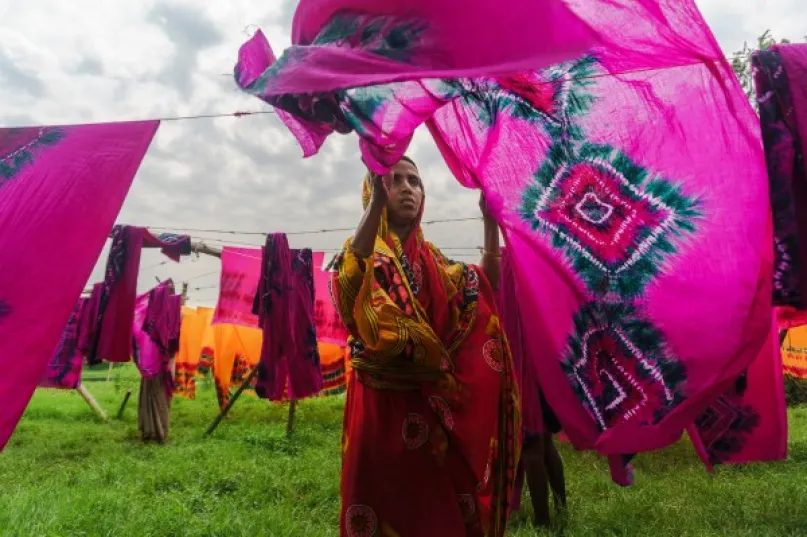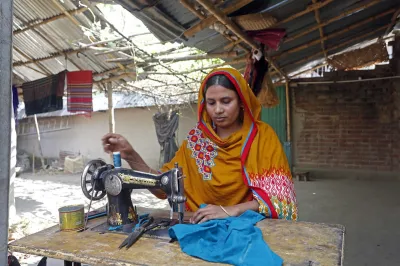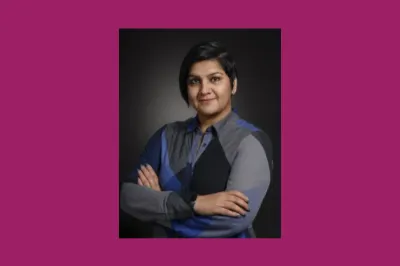How Can Gender Lens Investing Catalyze Growth For Women Led MSMEs?

In the intricate tapestry of global economic growth, there's an oft-underemphasized thread – women-led micro, small, and medium enterprises (WMSMEs). WMSMEs play a crucial role in their local economies, driving job creation, innovation, combating climate change, and ensuring food security. The GEM 2022/23 Women's Entrepreneurship Report found that one in four active, high-growth entrepreneurs globally are women, and that one in six women reported an intention to start a business in the near future as they see entrepreneurship as a path to a better future.
Yet, despite their potential to drive inclusive economic growth and contribute to their households’ wellbeing, WMSMEs across the globe struggle to access the capital needed to start or grow their businesses. Financial service providers (FSPs) such as banks, fintechs, and microfinance institutions play a central role in catalyzing capital for WMSMEs, but institutional biases, risk aversion, capacity and liquidity constraints, and a lack of tailored products and services hinder their ability to effectively serve this market.
During its global consultations in early 2023, the FinEquity membership prioritized Gender Lens Investing (GLI) and its role in increasing access to finance and supporting growth for WMSMEs as a key learning theme for knowledge exchange within the community. This blog dives deeper by providing a few practical examples of how GLI can incentivize FSPs to serve women entrepreneurs, and closes with a request for input from the FinEquity community.
Gender lens investing to close the women entrepreneurs financing gap
According to the Women Entrepreneurs’ Finance Initiative (We-Fi), over 400 million women entrepreneurs face a $1.7 trillion credit gap which, when closed, could add up to $6 trillion to the global economy. Frustratingly, the formal financial system fails to recognize this potential due to factors such as lack of physical collateral, perceived high risks, and gender biases.
Evolving digital financial systems aren’t doing much better at serving women entrepreneurs. A 2021 report from the Financial Alliance for Women found that there was a 27.6 percent fintech gender gap, which is much greater than that for bank accounts or smart phones.
GLI offers a solution to bridge the vast funding gap for women entrepreneurs. GLI recognizes gender-based disparities and directs capital to address them, supporting social and/or economic empowerment of women in pursuit of the ethical imperative of gender equity. But beyond that, GLI acknowledges the vast, untapped business potential of supporting women-led businesses in the form of financial returns. GLI often leads to better financial outcomes for investors since women entrepreneurs represent an underserved yet resilient and innovative market segment. In 2021, CGAP mapped the GLI landscape and estimated its value at around $24 billion. With the right incentives for FSPs, GLI has immense potential for catalyzing women's entrepreneurship and promoting inclusive economic growth.
Gender lens investors are well positioned to address the gender investment gap in the following ways:
- By providing risk-sharing mechanisms such as guarantees or first-loss capital to address the perceived higher risk of lending to women entrepreneurs (a misconception in many places). A $7 million first-loss guarantee facility from the U.S. Government’s International Development Finance Corporation enabled Banco LAFISE in Honduras to design and launch Pyme Mujer (Women SME), a gender-smart, bundled value proposition comprised of financial products and non-financial services, for its female clients. Since launching Pyme Mujer in 2022, Banco LAFISE has disbursed $5.1 million in loans to women-owned small and medium enterprises (SMEs).
- By applying a gender lens to climate investments, investors can create a multiplier effect and support women entrepreneurs predominantly working in climate vulnerable sectors like agriculture, forestry, healthcare, and tourism, to adapt and build resilience. XXI’s Women’s Livelihood Bond Series mobilized private sector capital and channeled it to FSPs in Asia, who in turn provided affordable credit and disaster insurance to over 1.3 million women entrepreneurs. With the right financial products and services, these women entrepreneurs were able to access agricultural inputs to support their own climate adaption, as well as clean and affordable energy in support of climate change mitigation.
- By offering capacity-building support to FSPs on adopting a gender intelligence approach at every step of the customer journey. Capacity-building support can help FSPs to better understand the female market, design appropriate products, and refine their outreach strategies. In the case of Banco LAFISE, ACDI/VOCA provided technical assistance, for a top-to-bottom organizational change including training over 300 staff to integrate a gender intelligence approach across the institution.
While GLI has been around for almost a decade within the broader impact investing ecosystem, it has gained greater traction in recent years with the launch of global initiatives such as the 2XChallenge in 2018 and We-Fi in 2017. The 2XChallenge mobilizes gender lens investment and provides a framework for gender smart investment and impact assessment. Surpassing its original goal of $3 billion by 9 times, it has evolved into 2X Global and continues to support the gender lens investing ecosystem through certification, capacity building and knowledge sharing. Meanwhile, We-Fi facilitated over $1.2 billion in investments in women entrepreneurs between 2017 and 2022, with plans to grow this to $3 billion by 2030. In addition to facilitating investments, We-Fi is catalyzing global action to scale efforts through the newly launched WE Finance Code. The code is a commitment by FSPs, regulators, development banks, and other financial ecosystem players to increase funding for WMSMEs around the world. These early successes illustrate the incredible potential for GLI to close the investment gap for women entrepreneurs.
We want your input:
As global efforts to scale GLI and close the financing gap for women entrepreneurs continue, there is an opportunity to grow the evidence base and learn more from practice about which strategies in gender lens investing are creating the most impact for WMSMEs. To this end we would like your input on the following:
- Please share examples of what has worked, and lessons learned from your experience designing and delivering bundled value propositions (such as Pyme Mujer) for WMSMEs. Selected examples will be featured in upcoming webinars, and the FinEquity Annual Convening on February 7 and 8, 2024.
- What role do you see for GLI to scale up funding for WMSMEs, enabling them to grow, and to increase productivity and employment?
- What resources have you found most useful in your work on this topic? What additional resources would be most useful to you?
Please feel free to share your responses either directly with me (nsingh8@worldbank.org) or through the FinEquity DGroups or Linkedin group.
This blog was revised on 30 November 2023.


